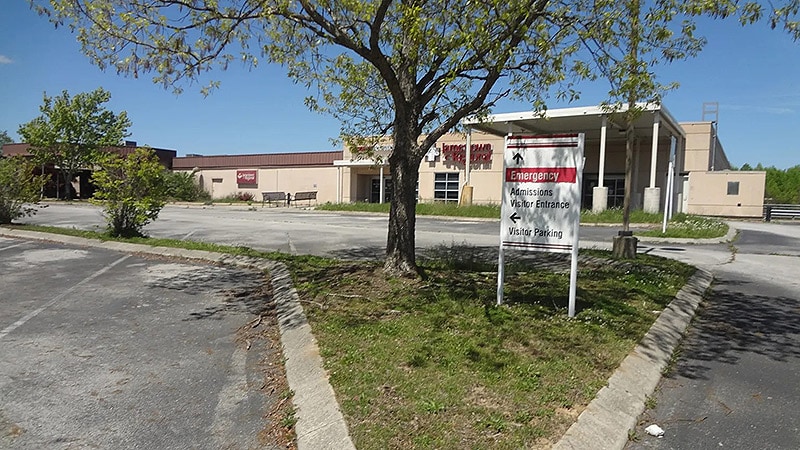Please note that the text below is not a full transcript and has not been copyedited. For more insight and commentary on these stories, subscribe to the This Week in Cardiology podcast, download the Medscape app or subscribe on Apple Podcasts, Spotify, or your preferred podcast provider. This podcast is intended for healthcare professionals only.
In This Week’s Podcast
For the week ending June 21, 2024, John Mandrola, MD, comments on the following news and features stories.
MRAs in HF With Renal Dysfunction
Prof Doron Zahger centered on my coverage of the combined analysis of RALES and EMPHASIS, first author Matsumato, in JACC.
This was a paper that looked at effect of mineralocorticoid receptor antagonists (MRA) in a subgroup of patients who had a drop in GFR to < 30 ml/min/1.73 m2 . The authors found that these patients had higher risk of the primary outcome, compared with those who did not have a drop in GFR, but the effect of MRA persisted.
Zahger smartly points out that of the 295 patients in both arms (MRA and placebo) who had a decrease in GFR, one in 4 or 78 discontinued the MRA therapy.
He writes that
These discontinuations were probably mostly decided by the study team based on clinical judgment and hyperkalemia. We are not told whether such discontinuations were protocol mandated. Therefore, a more accurate interpretation of the results would be that the benefit of MRAs is maintained among patients who experience a GFR decline PROVIDED their physicians did not decide to stop the medication.... A take home message that MRAs may be continued in the face of eGFR decline would be both inaccurate based on the data and potentially harmful.I really appreciate this point. It emphasizes trial environment vs real world care.
I should have mentioned though that authors thought of this issue and did a sensitivity analysis depending on MRA discontinuation or not. The HR remained beneficial even in the small numbers of patients who discontinued the drug during the trial. Here the numbers are small and I reiterate my comment
We need to always be mindful that individuals are not populations. These net benefits were obtained in a trial setting—where you can be sure there was careful monitoring.
Coronary artery autoregulation with increasing stenosis
Today we talk about coronary autoregulation. That’s a bit of medical jargon but at the core of this issue is the matter of why people do so well despite severe CAD.
Angiograms often don’t match up with symptoms. Angiograms are often much worse than symptoms.
NEJM published this research letter of sorts. A single patient. 63 years old with refractory angina and an LAD sent. Imagine a study in NEJM with one patient. You know it must be an elegant study.
He then had a pressure and temperature wire placed in the distal LAD. After the stent was placed.
The investigators then placed an undersized balloon within the stent to test varying degrees of occlusion.
They then plotted the distal LAD pressure and absolute coronary flow. This like a fractional flow reserve (FFR). They did it at rest and then with saline infusion to simulate hyperemia.
Resting flow remained stable over the range of distal coronary-to-aorta pressure ratios. Let me say that again. As they inflated the balloon and caused varying degrees of epicardial stenosis, distal flow did not change.
Why? Because the coronary microcirculation vasodilates and compensates. Increasing epicardial resistance induces instantaneous microcirculatory vasodilation resulting in a compensatory decrease in microvascular resistance.
Then they did hyperemia. First point—the flow increased 4-fold. But as the balloon was inflated, creating more and more stenosis, flow decreased in a linear fashion.
Hyperemic flow approximated a linear relationship with the FFR reserve. Decreasing from 176 ml to 81 ml per minute.
These two findings show the autoregulatory capacity of the coronary microcirculation. I, maybe you too, don’t think about the microcirculation that much. Modern cardiology focuses on the epicardial stenoses. We can stent those.
Total coronary resistance therefore is the sum of epicardial resistance (stenosis on angiogram) and microvascular resistance.
I was struck by the fact that flow was absolutely maintained despite major stenoses. Because of the vasodilation of the microcirculation.
The three Belgian authors also showed that the vasodilation can max out, and then with increased demand, flow goes down.
I spoke with Venk Murthy, MD from the University of Michigan, about this study, and he emphasized that people with microvascular dysfunction, say from diabetes, obesity, HTN, or other conditions, may lose the dilatory properties of the micro-circulation, and if that happens, stenoses of 30%-40% may cause significant ischemia.
It’s an elegant study, I’d take a look at it, and keep thinking about the microcirculation. It’s not just about those epicardial stenoses that we cosmetically improve with PCI.
RECOVER IV Impella trial Halted
The RECOVER IV trial was an RCT of the micro-axial flow pump vs standard care in infarct-related cardiogenic shock. Normally, I have an allergy to brand names, but here I make an exception and call the micro-axial flow pump Impella.
Abiomed, the makers of the flow pump, funded the mostly US trial. It was similar to DANGER-Shock, but the primary outcome of death was to be measured at 30 days not 180 days.
This week, however, trial authors announced that the trial was halted because of the positive results of DANGER-Shock. I learned of this on Twitter or X. The data safety monitoring board (DSMB) thought that there was no longer equipoise.
Gregg Stone, MD wrote on Twitter/X that they had spent 2 years designing REVOVER IV and were motivated to continue, but imagine, approaching a shock patient or family saying “one study showed the device might offer a 1 in 8 chance of saving your life but there is some uncertainty so do you agree to a 50% chance of no device?”
I respect Stone, but I could not disagree more with this sentiment.
I’ve covered DANGER-Shock and have written that I believe the positive results are likely reflective of the device. But. But. That is not the same thing as saying the door is closed and Impella is 100% beneficial.
My argument against Stone’s POV is that DANGER-Shock is not bullet proof.
This was a trial that took a decade to enroll the 360 patients. They screened 1200, excluded 851 patients and enrolled only 360.
I am told that PI Jacob Moller was a force of nature making sure that the trial enrolled patients who met the strict entry criteria. This was a highly select group.
Even so, the standard arm had a near 60% death rate. That’s higher than previous CS trials.
There was an imbalance in ECMO use.
The p-value was 0.04. The Fragility index was only 4 events.
Stone refers to a 1 in 8 chance the IMPELLA reduced death. That comes from an ARR of 12%. But with this few patients, it could all be noise.
Also—at 30 days, there was clear overlapping of the Kaplan Meier (KM) curves. RECOVER was to be 30 days.
Finally, explain this to me…in the as treated analysis, the risk reduction did not meet statistical significance. If the IMPELLA effect was bullet-proof, you’d expect the as-treated analysis to be more robust not less.
Seriously friends, I am frustrated with this decision and the entire device acceptance situation in cardiology. It’s sad. One of the draws for me going into cardiology was its leadership in generating evidence. I started cardiology in 1991, the year that CAST was published. That was a brave trial.
Key opinion leaders like Stone and the principal investigator (PIs) and DSMB are academics. They know these 8 reasons why Danger-Shock is not bullet-proof.
We depend on academics to be leaders in not only generating the evidence base, but also shaping opinion. And the opinion they should be shaping in the case of LV support devices in CS is one of equipoise.
Halting this trial just reinforces the US-doctors view that Impella is clearly beneficial, and patients can’t be randomized. (Of course, since compensation is so strong for Impella, there’s a bit of Upton Sinclair effect that influences the lack of equipoise belief. Recall that Upton Sinclair famously wrote that it is difficult to get a man to understand something when his salary depends on him not understanding it.
Sanjay Kaul wrote on Twitter that SGLT2 trials did not stop after the first one was positive.
I am not sure DANGER-shock replicates outside of Denmark. In the supplement, patients recruited in Germany had no benefit. It was all from Danish centers. That speaks to the carefulness of PI Jacob Moller. But Jacob Moller cannot govern all Impella implants.
If you believe in Impella you should want a second trial to confirm your belief. The trial could have an adaptive design; there could be early looks to rule out clear benefits.
A final comment on the matter of device approvals. Impella got approval years ago, without RCTs. Left atrial appendage occlusion devices got approval despite the last regulatory trial not meeting noninferiority in its co-primary endpoint. Tricuspid devices were approved recently based on quality of life data and the trials were not placebo controlled.
These are embarrassing. Think about Danger-shock. If this were NS, we’d have implanted a non-beneficial device in many thousands of people.
Regulation of devices needs a complete overhaul. Bobby Yeh, MD explained to me recently that there are negatives to requiring evidence BEFORE approval—because this penalizes first-generation devices, but we should clearly have some evidence before approval and then an iron-clad promise to generate data post-market. Not 10 years later, but soon after. And if no data is generated, the device is removed from the market.
Doctors can help in my quest to prove devices work before usage. How? By wearing your science hat and demanding better evidence. By being less confident in benefits.
The RECOVER decision makes me as sad as I have been in a long time regarding my profession
NSTEMI in the Elderly
I don’t know about your workplace, but at mine, we take care of a lot of patients who over 80 years old.
Most of the largest clinical trials enrolled younger patients. There have been trials of older patients with NSTEMI but individually, these are small and often underpowered.
Older patients are different. While, yes, they have higher risk of the primary outcome they also have higher risks of treatment-related harm, as well as higher rates of competing risks—such as cancer, falls, infection, etc.
In younger patients who have high risk, guidelines suggest that early invasive approach is preferred over a conservative strategy of medical therapy then angio and revascularization based on symptoms or risk stratifying tests.
EHJ has published an individual-patient-meta-analysis of 6 trials of early invasive vs conservative strategies in older patients. First author – Christos Kotanidis.
Their primary endpoint was a composite of death or MI at one year.
Nearly 1500 older patients were included in these 6 studies. Mean age 84. Two thirds were Killip class 1 and about 80% were Killip class 1 or 2.
A primary outcome event (death or MI) occurred in 24.5% in the invasive arm vs 28.9% in the conservative arm. The summary HR was 0.87 and the 95% CI went from 0.63-1.23. So clearly not significantly different. They used a random-effects analysis, however, one curious thing, which I don’t totally understand yet, is that in the supplement, the HR using a fixed effect model found a similar HR of 0.82 but much tighter CI and the upper bound was 1.00 so quite close to significant.
There was also no difference in CVD or stroke. The individual components of MI and repeat revascularization were lower in the invasive arm.
They also looked at subgroups, based on things like age, sex, diabetes, previous PCI, and found no clinically relevant heterogeneity. One exception might have been positive vs negative troponin. Here immediate looked better, but there were so few negative troponin cases, I don’t think you can say much.
The authors conclusion:
No evidence was found that routine invasive treatment for NSTEACS in older patients reduces the risk of a composite of all-cause mortality and MI within 1 year compared with conservative management. However, there is convincing evidence that invasive treatment significantly lowers the risk of repeat MI or urgent revascularization. Further evidence is needed from ongoing larger clinical trials.Ongoing clinical trial = British Heart Foundation SENIOR-RITA
Comments This looks to be a strong meta-analysis. One observation is that they used a random-effects model in comparing the trial results. Using a fixed effect, the results of the primary endpoint was close to significance.
They write that random-effects models are often considered preferable to fixed-effect models as they account for inherent variability and heterogeneity among studies, providing a more realistic and generalizable estimation by allowing for the possibility that true treatment effects may vary across studies due to diverse populations, methodologies, or other underlying factors.
I am a student of statistics, but I have read that there is debate about the application of fixed vs random effects. I can’t say which. I will link to a great discussion on Prof Frank Harrell’s discussion board called datamethods.
Either way, this combination of six studies with individual patient data find no clear advantage of early invasive. Death, CVD, stroke are no different. Yes, MI is reduced, but that effect is not enough to drive CV death or death. That makes sense because recurrent MI has become a pretty poor surrogate marker.
Here I should remind listeners of a very important paper from the David Brown when he was in St Louis. In 2021, in JAMA-IM, Kevin O’Fee first author. They meta-analyzed a 144 trials of more than a million patients and found that non-fatal MI fails as a surrogate for all-cause or CVD.
This is especially true in more recent times because it’s nearly impossible to present with any ischemic event and NOT have a hs-troponin bump.
As for the outcome of revascularization, this is a ridiculous endpoint, because it will always be higher in the conservative arm. Recall that the conservative arm of these trials is not medicine-only. It is initially medicine, then risk stratification. Many patients with NSTEMI managed conservatively will have revascularization based on recurrent ischemia or risk stratification.
I like this analysis because it highlights the all-important issue of heterogeneous treatment effects. Yes, the seminal trials of inv vs cons management show benefits to invasive in higher-risk patients. These trials enrolled younger patients.
Older patients are higher risk, but older patients also have higher rates of adverse effects and more competing risks.
As such, there is no obvious benefit from invasive approaches—at least routinely.
So, most importantly, if a patient with NSTEMI earns their label as higher risk based on age, we should not apply standard guideline-directed early invasive approaches.
This meta-analysis finds no obvious benefit from early invasive. For me, when that is the case, conservative strategies are generally the preferred one.
MI Survival
Speaking of MI as a lousy surrogate endpoint, JACC has published an observational study that reveals quite good news.
Researchers in Aarhus Denmark, first author, Pernille Gro Thrane, asked the question about how patients with STEMI who are treated with PCI do over the long-term. Specifically, those who survive the early phase.
They used the Danish registry to find first-time PCI-treated patients who had STEMI.
That’s the treatment arm. They then matched these patients by age and sex to 5 individuals from the general population.
They had about 19K pts with first time STEMI and 94K from the general population.
Here were the results comparing the two groups.
STEMI was associated with excess mortality to 30 days. (6% vs 0.2%) HR was actually 36-fold.
From 31 to 90 days, the excess mortality was higher, but it was 0.9% vs 0.4% so only 2.4-fold higher.
For 90-day survivors of STEMI, the absolute excess mortality was only 2% higher at 10 years. It was 26.5% vs 24.5%. HR 1.04.
The KM curves after 90 days are nearly identical with only small divergences at 8 years.
Comments That is pretty amazing. A huge testament to modern cardiology. Both PCI and secondary meds are the likely drivers.
Second comment—this is a good use of observational data. The authors are not making causal comparisons of two non-random groups. Rather, they are describing outcomes and comparing to the general population.
Third – we’ve sort of known that PCI-treated STEMI survivors who take meds do well. Or, at least we suspected it. It’s common to see patients with a distant history of STEMI. Now, we can tell those who survive PCI and stent that if they take their meds and pursue an Aarhus-like lifestyle, they can expect nearly the same lifespan as patients who did not have PCI.
Fourth, there is some sobering news from this observation—scientifically that is. While we have transformed the condition of MI for most patients, it makes it harder to show gains with newer therapies. To me, this is exactly why David Brown’s paper confirms that MI is now a lousy surrogate endpoint.
Composite endpoints driven by things like urgent revasc or nonfatal MI are inherently weak. Weak because this paper shows that surviving an STEMI has essentially no effect on survival.
As users of newer therapies, we should expect clinically meaningful gains—especially if these newer therapies are invasive or costly. Reduction of nonfatal MI is not likely an important endpoint in 2024.
JACC
A word to Harlan Krumholz, MD and the new JACC team. JACC sent me an email this week that the first issue under the leadership of Krumholz is coming next week.
I met him at the Lown Institute meetings. I recall his spirited lectures about generating better evidence, promoting better critical appraisal, and highlighting high-value care. And it was an honor to meet his team at Yale when I spoke there a few years ago.
Now I want to wish the best to the new JACC team.
The Journal of the American College of Cardiology is one of the most important adjudicators of cardiology science. I do have one wish: I would love to see a bit of Rita Redberg’s JAMA-IM emerge in the new JACC.
Good luck to the new team.

.webp) 6 days ago
7
6 days ago
7


























 English (US)
English (US)